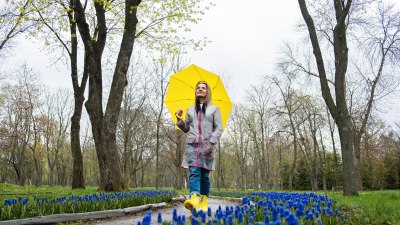Why Late Afternoon Sun Is Basically Emotional Lighting
Explore how late afternoon sunlight enhances emotions and moods with its warm glow and calming effects.

Image created with Flux Schnell
The late afternoon sun has a unique quality that many people find emotionally resonant. As the day winds down and the sun begins its descent toward the horizon, the light it casts transforms the environment in ways that evoke warmth, nostalgia, and calm. This phenomenon, which can be described as 'emotional lighting,' plays a significant role in shaping human emotions and experiences during this particular time of day.
Light is not just physical illumination; it also influences our emotional and psychological states. The late afternoon sun, often characterized by its golden hues and long shadows, creates an atmosphere that can affect our mood and perceptions. This type of lighting differs significantly from the harsh brightness of midday or the dimness of early morning and twilight, offering a blend of warmth and softness that is deeply comforting.
The Science Behind Late Afternoon Light
To understand why the late afternoon sun feels emotionally impactful, it's helpful to look at the science of light itself. Sunlight is composed of various wavelengths, and as the sun moves lower in the sky, the light passes through more of the Earth's atmosphere. This scattering effect filters out shorter blue wavelengths and allows longer red, orange, and yellow wavelengths to dominate. The result is the warm, golden tones characteristic of late afternoon and sunset.
These colors are not just aesthetically pleasing; they influence human biology. Research has shown that exposure to warm light can trigger the release of serotonin, the neurotransmitter associated with mood regulation and feelings of well-being. This means that the late afternoon sun can naturally enhance our mood and reduce stress levels.
Furthermore, the angle of the sun during the late afternoon creates longer shadows and softer contrasts in the environment. This gentle lighting reduces glare and harshness, making spaces feel more inviting and tranquil. Our eyes respond well to this kind of balanced illumination, which can help reduce eye strain and promote relaxation.
Emotional Associations With Warm Light
Warm light, like that of the late afternoon sun, is often linked to feelings of comfort and safety. Historically, humans have associated firelight—which shares similar warm tones—with warmth, community, and security. This deep-seated connection extends to natural light as well. When the late afternoon sun bathes a scene in amber hues, it taps into this primal emotional response, fostering a sense of belonging and peace.
The nostalgic quality of late afternoon light also contributes to its emotional impact. This time of day is often connected in our minds to endings, reflection, and the anticipation of evening rest. The soft glow can evoke memories or feelings of contemplative moments spent outdoors during childhood or significant life events, deepening its emotional resonance.
Psychological Effects of Late Afternoon Sunlight
Exposure to natural light is known to have profound psychological benefits, including improved mood, increased alertness, and better sleep quality. The late afternoon sun, in particular, offers a unique combination of these benefits due to its timing and color temperature.
During this period, the body’s circadian rhythms begin to prepare for rest. The warm colors of the light signal to the brain that it’s time to start winding down, promoting relaxation without inducing sleepiness prematurely. This process can help reduce anxiety and create a serene mental state that is conducive to reflection and emotional balance.
The interplay of light and environment also enhances mindfulness. The gentle lighting encourages a slower pace, helping people to become more present and engaged with their surroundings. This mindful presence can lead to greater emotional awareness and resilience, as individuals feel more connected to themselves and the world around them.
The Role of Late Afternoon Sun in Art and Culture
Artists throughout history have been captivated by the unique qualities of late afternoon light. From the Impressionists to contemporary painters and photographers, capturing the warm glow and atmospheric effects of this time of day has been a central theme of creative works.
In visual art, the late afternoon sun creates dramatic contrasts and rich colors that can convey mood and narrative powerfully. This lighting is often used to suggest themes of transition, introspection, or emotional warmth. Similarly, in photography, the so-called 'golden hour' just before sunset is prized for its flattering and evocative light that adds depth and emotional nuance to portraits and landscapes.
Culturally, many traditions and rituals are timed around the late afternoon or sunset as symbolic moments of closure, gratitude, or contemplation. The shared experience of observing the changing light provides connection and emotional significance, reinforcing its role as an emotional and communal kind of lighting.
How to Harness Late Afternoon Sun for Emotional Well-Being
Understanding the benefits of late afternoon sunlight opens the door to intentionally using it to enhance emotional well-being. Spending time outdoors during this period can be a simple yet powerful way to improve mood and reduce stress.
Activities like walking, meditating, or simply sitting in a sunny spot allow individuals to soak in the calming effects of the light and engage in reflective thought. Incorporating moments of stillness during the late afternoon can serve as daily emotional reset points, helping to maintain balance in a hectic world.
Additionally, designing living and workspaces to maximize exposure to natural light during the late afternoon can support mental health. Positioning seating areas near west-facing windows or incorporating reflective surfaces to bounce warm light indoors can recreate some of the emotional lighting effects even when outside time is limited.
Psychological Practices Inspired by Emotional Lighting
The concept of emotional lighting extends beyond physical light into the realm of psychological practices. Therapists and counselors sometimes use visualization techniques that mimic the warm, soothing characteristics of late afternoon sun to help clients manage stress and enhance emotional comfort.
By guiding individuals to imagine themselves bathed in warm, golden light, these practices can evoke feelings of safety and tranquility, similar to the natural experience. Mindfulness and gratitude exercises performed during the real late afternoon light can amplify these effects, leading to deeper emotional healing and resilience.
Seasonal and Geographic Variations
While the emotional effects of late afternoon sun are fairly universal, geographic location and season can influence the exact quality and duration of this light. In higher latitudes during certain times of the year, the golden hour can be either prolonged or very brief, impacting how people experience this emotional lighting.
Similarly, cloudy or polluted skies can alter the color and intensity of late afternoon sunlight, potentially diminishing its emotional impact. For some individuals, finding places with clear horizons and minimal obstructions is important to fully benefit from the warm glow of this time of day.
Adapting to these variations means tuning into local environmental cues and adjusting daily routines to align with natural light patterns, reinforcing the connection between our emotional states and the rhythms of the sun.
The Intersection of Technology and Emotional Lighting
In modern environments where natural light may be scarce or inconsistent, technology tries to replicate the emotional benefits of late afternoon sun. Smart lighting systems can mimic the color temperature and intensity changes of natural light throughout the day, creating indoor spaces that support circadian rhythms and emotional balance.
While artificial emotional lighting cannot fully substitute the experience of real sunlight, it offers valuable tools for enhancing well-being, especially in workplaces and urban homes where exposure to natural late afternoon light is limited.
Combining technology with architectural design to maximize natural light exposure is an emerging trend aimed at promoting healthier, emotionally supportive environments.
The late afternoon sun truly functions as emotional lighting by virtue of its warm hues, soft shadows, and timing within our daily rhythms. It connects us to nature, history, and deep psychological responses that encourage comfort, reflection, and emotional renewal.
Whether experienced outdoors or through conscious design indoors, the golden glow of late afternoon light offers a simple yet profound way to enrich our emotional lives. By honoring this natural phenomenon, we tap into a timeless source of emotional warmth and balance that enhances our well-being in subtle but powerful ways.











